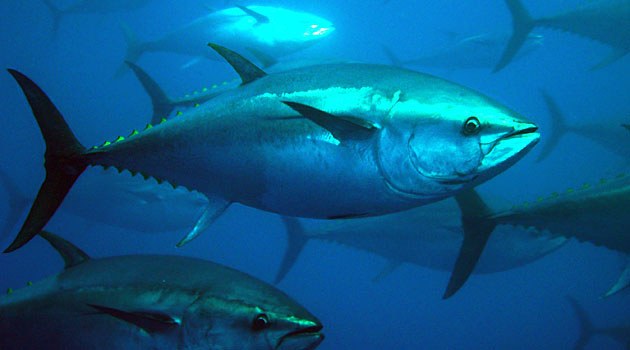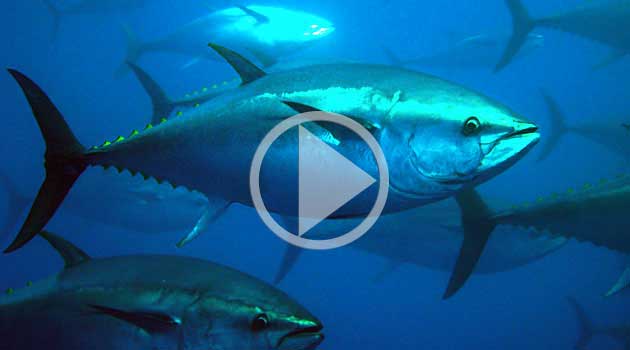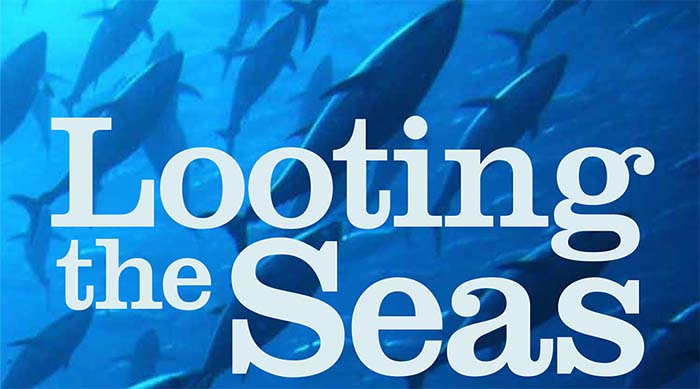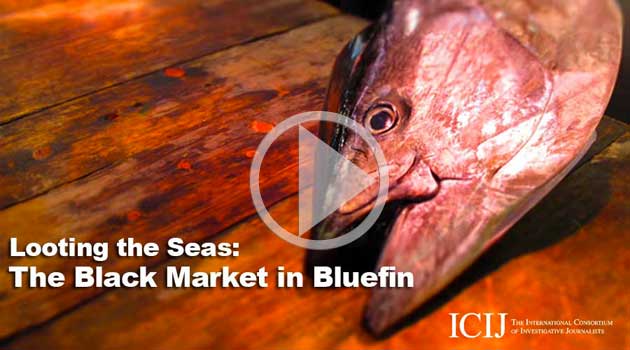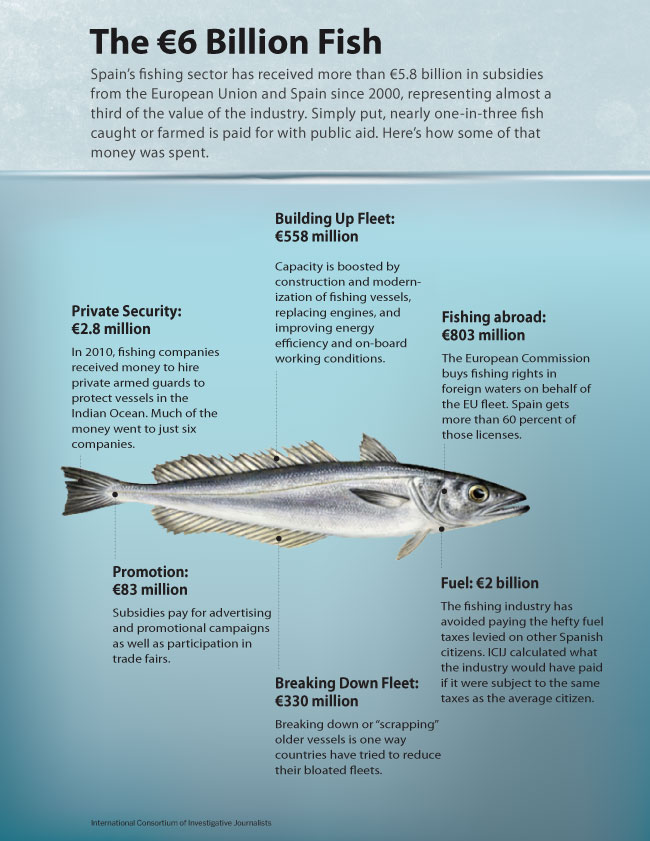Looting the Seas is a two-year project by the International Consortium of Investigative Journalists looking at the forces that are rapidly depleting the oceans of fish. ICIJ’s initial investigation focuses on the prized Eastern Atlantic Bluefin Tuna, a sushi delicacy served in restaurants worldwide. For seven months, ICIJ deployed a team of 12 journalists to investigate the bluefin trade. The project found that the demise of the bluefin was directly linked to years of widespread fraud, negligence, and lack of oversight that spanned the entire bluefin supply chain — from fishing fleets and tuna ranches to distributors.
Our Partners
ICIJ’s multinational team scoured public records and interviewed sources in ten countries. Our partners include BBC World News, Le Soir (Belgium), Stern (Germany), The Sunday Times (United Kingdom), and Il Fatto Quotidiano (Italy).
The Team
ICIJ Director: David E. Kaplan
Project Director: Marina Walker Guevara
Chief Reporter: Kate Willson
Data Editor: David Donald
Reporting Team: Marcos Garcia Rey (Spain), Jean-Pierre Canet (France), Scilla Alecci (Washington, D.C.), Brigitte Alfter (Denmark), Martin Foster (Japan), Fred Laurin (Sweden), Miranda Patrucic (Croatia), Traver Riggins (Washington, D.C.), Leo Sisti (Italy), and Gul Tuysuz (Turkey)
Web Team: John Solomon, Andrew Green, Erik Lincoln, and Cole Goins
Consultant: Roberto Mielgo Bregazzi
Documentary Team: Steve Bradshaw, Bruno Sorrentino, Jenny Richards, Davina Rodrigues
Treesaver Website Design: Roger Black Studio
Graphics: Stephen Rountree
Funding
Looting the Seas is generously supported by grants from Adessium Foundation, the Pew Charitable Trusts, and the Waterloo Foundation. Support for this and other Center for Public Integrity projects is provided by the Carnegie Corporation of New York, the Ethics and Excellence in Journalism Foundation, the Ford Foundation, the John S. and James L. Knight Foundation, the John D. and Catherine T. MacArthur Foundation, the McCormick Foundation, NoVo Foundation, the Park Foundation, the Popplestone Foundation, Public Welfare Foundation, Surdna Foundation, and the V. Kann Rasmussen Foundation.
Methodology
The ICIJ investigation relied on more than 200 interviews with fishermen, ranchers, divers, officials, scientists, and traders, as well as court documents, regulatory reports, and corporate records in ten countries: Belgium, Croatia, France, Italy, Malta, Spain, Japan, Tunisia, Turkey, and the United States. An extensive literature search was also made, focused on news stories, NGO reports, and scientific studies.
ICIJ also conducted analysis of internal data submitted by the Eastern Atlantic bluefin tuna industry to regulators, and on the scope and size of the bluefin black market.
BCD analysis
For its analysis of the bluefin tuna trade, ICIJ also relied on internal data collected by the International Commission for the Conservation of Atlantic Tunas (ICCAT), the intergovernmental body established to regulate the trade of tuna-like species in the Atlantic and adjacent waters, including the Mediterranean.
The data are used in a program launched in 2008 called the Bluefin Tuna Catch Document Scheme. The individual paper records are referred to as BCDs. The BCD follows a catch (a group of tuna caught at one time) from fishing vessel, through transfer to a fattening ranch, through harvest (each time fish are taken from the salt-water pens and killed) to export and finally to sale. A copy of the BCD goes to the ICCAT member state involved in that transaction. In turn, the member state forwards a copy of that paper record to the ICCAT secretariat office in Madrid. The database is password-protected and available only to a few officials in each ICCAT member state.
ICIJ was provided access to the database through an ICCAT member state. It also was provided a copy of the complete database by a confidential source. The most recent update of the data set was completed in summer 2010, the most recent data available for its analysis.
Focusing on 2008 and 2009, ICIJ examined allegations that the database was ineffective at tracking fish from catch to sale. If such findings were confirmed, then by extension it would bring into question the ability of the system to police the trade. ICIJ crosschecked the raw data provided by the source by taking a random sampling of the source’s records and comparing them to the records in the BCD database. The accuracy of the source’s data was confirmed.
Finding the data in an inconsistent state, ICIJ cleaned and regularized names and other attributes before doing basic analysis. Some queries of specific interest included: percentage of entries without complete information, cases in which the individual mean weight of the entire catch was exactly at the minimum allowable size, cases in which more fish were harvested (killed for export) than were transferred into fattening ranches, and vessels that reported fishing more than legally allowed under their ships’ quotas.
ICIJ attempted to seek out data analysts at the ICCAT Secretariat to discuss the findings. Officials there declined the request.
Black market estimate
ICIJ used diverse sources to piece together an estimate of the black market in bluefin tuna. Many of these sources provided data — on annual catch and market prices — that themselves were only estimates. In each case, ICIJ took the lower end of the estimate so that the final calculation was as conservative as possible. The total bluefin tuna catch figures from 1998 to 2007 come from ICCAT’s Report of the Standing Committee on Research and Statistics, October 4 to 8, 2010. In describing the catch figures, ICCAT scientist Jean-Marc Fromentin, one of the report’s authors, said the committee estimated the total catch by looking at each vessel’s capacity, the number of actual days at sea, and the amount a vessel would need to catch to remain viable.
To estimate the size of the overcatch for each year, ICIJ compared the estimated total catch to the specific quota set by ICCAT in its Biannual Report series. That comparison provides the number of tons of bluefin tuna illegally caught and traded above the quota by year.
To determine the dollar value in the market, ICIJ used data from the Tokyo Metropolitan Central Wholesale Market, or Tsukiji Market, where bluefin tuna are traded, and from Japan’s Fisheries Agency. ICIJ calculated an average yen-per-ton price from 1998-2007 and converted yen to dollars using an average annual exchange rate.
